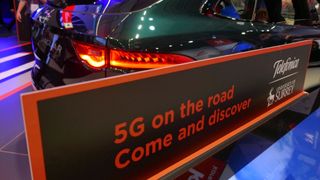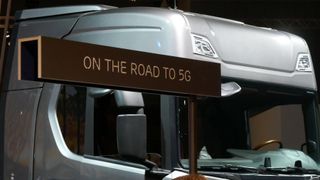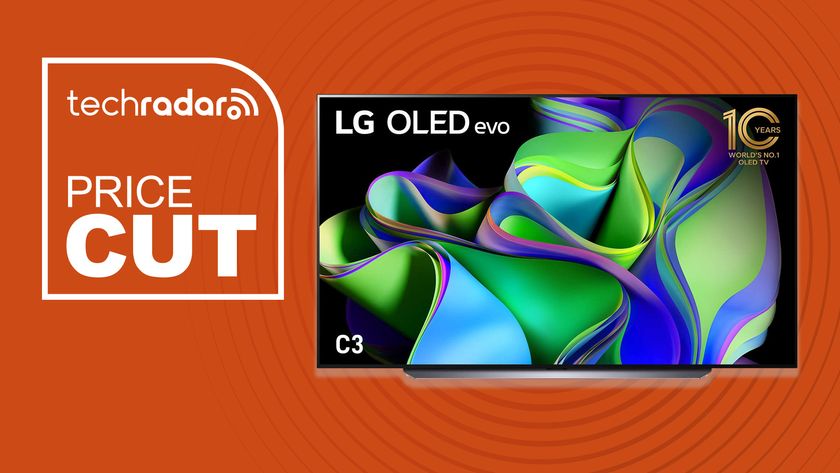5G is coming soon, but what’s in it for businesses?
It’s not about bandwidth, but real-time cloud computing
AR and VR at work
With the advent of 5G, it's possible that smartphones will wither as untethered wearables become more prominent. 5G networks’ promise not of 20Gbps, but of 1,000Mbps connections everywhere, will certainly help popularise wearables of all kinds at work, but 5G will be capable of some stunning new applications.
"VR will enable people to be more efficient at work, it's not just about entertainment," says Kai Sahala, Head of Radio Marketing, Mobile Networks, Nokia. "We are looking at use-cases where an expert or an engineer is going to fix a machine, and he can get much more information from the back office."
3D renderings, schematics and possibly even holographic images could be sent to head-mounted displays, which are already beginning to be used in industrial settings.
"5G brings to VR the ability to see what is in front of you and put it in the virtual world, and you can turn a physical world into a virtual environment into a virtual world – it's merged reality," says Julie Coppernoll, VP, Marketing, Intel Corporation.
“With the Intel RealSense camera a doctor could see the patient, but in the virtual world they could see the scans, the X-rays, or another doctor talking to them, but they're still in the world with that patient,” she adds. “With 5G we can get the video transferred quickly and make it all live, which is so hard to do now.”
Virtual meetings and remote touch
5G's ability to deal in high resolution images, and its sub-millisecond latency, could push videoconferencing into another dimension. Some even suggest that holographic conference calls could be enabled by 5G, though the real advance will be instant communications.
"If you're meeting someone in a virtual space and you're doing something that requires a response from the other person, then the speed needs to be very fast because that's how the human brain works – you need that kind of response from your movements," says Sahala. The same goes for remote surgery – and that's where remote touch comes in.
Are you a pro? Subscribe to our newsletter
Sign up to the TechRadar Pro newsletter to get all the top news, opinion, features and guidance your business needs to succeed!

Touch and telesurgery
“When people talk about remote surgery, they don’t mean a surgeon in London operating on someone in Alice Springs, they mean wirelessly doing remote surgery while in the same room,” says Henry Calvert, Senior Director, Head of Network 2020 at the GSMA, who’s talking about robotically-assisted surgery using machines to make incisions.
"It takes one surgeon to put the machine into the patient and to keep the patient alive, and another to do the work remotely from a console," he explains. That sense of touch is only possible via 5G, which could herald a new era of haptic communications, and a tactile internet.
An IoT that can grow
"A cornerstone of 5G will be the massive amount of devices that are going to be connected," says Sahala. For now, the IoT doesn't need 5G. It's not about throughput, it's about potentially millions of sensors and devices sending tiny amounts of data back to the cloud, but there will come a time when 5G will be an essential part of the IoT.
"Within the next few years the IoT will grow and it will need 5G, which is capable of supporting tens of thousands of devices per square kilometre," says Sahala. That kind of density just isn't sustainable using current IoT infrastructure.

Smaller cells and targeted 5G
5G means smaller cells since mmWaves don't travel far. However, that means a denser network is required, and the speed of the connections will be such that swapping between base stations or routers will be instant. No more dropped calls while travelling at high speed, and – at last – reliable, fast internet on trains.
That could significantly impact any business whose employees travel a lot, or work while on their way to or between offices. But it could also mean, at first, that a big office only has wireless 5G in a critical area where superfast speeds are required. "5G will initially have spotty coverage, so it will be used for specific use-cases in urban areas, and maybe for specific facilities, and coverage will gradually improve," says Sahala.
The 5G future
Up to 20Gbps speeds on mobile devices may sound impressive, but the objective for network operators will be to get data onto fibre as soon as possible. However, the real vision behind 5G is to connect everything to everything in real-time, creating instant data links and a burgeoning IoT.
"I expect that many use-cases will not be envisioned or realised until we have this level of 5G capability available to drive development of new ideas," says Bryant. "These things may seem unnecessary to our current technology and way of thinking, but things will change just as they have with terabytes of storage, the development of the cloud, LTE and more."
5G is just another technology transition, nothing more than an inevitable next-generation of mobile communications. But when people talk about the Fourth Industrial Revolution, 5G is the enabling technology.
- We’ve also highlighted 10 upgrades the Industrial IoT badly needs
Jamie is a freelance tech, travel and space journalist based in the UK. He’s been writing regularly for Techradar since it was launched in 2008 and also writes regularly for Forbes, The Telegraph, the South China Morning Post, Sky & Telescope and the Sky At Night magazine as well as other Future titles T3, Digital Camera World, All About Space and Space.com. He also edits two of his own websites, TravGear.com and WhenIsTheNextEclipse.com that reflect his obsession with travel gear and solar eclipse travel. He is the author of A Stargazing Program For Beginners (Springer, 2015),













